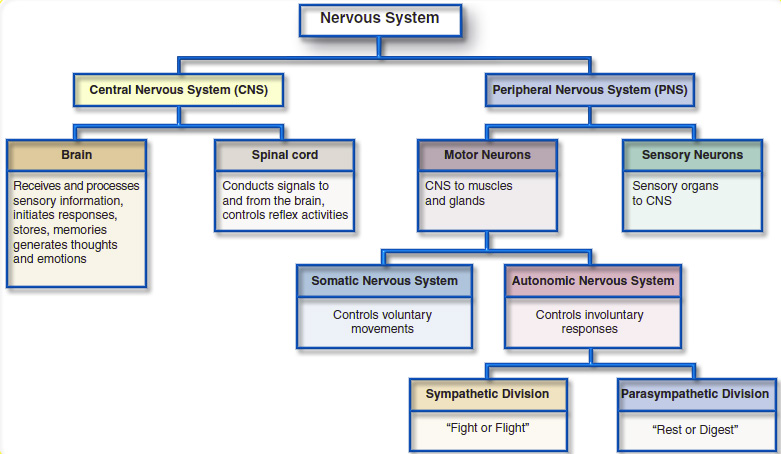
Postganglionic neurons then release norepinephrine onto target organs. The acetylcholine activates the postganglionic neurons. The axons of these neurons release acetylcholine on postganglionic neurons within sympathetic ganglia (the sympathetic ganglia form a chain that extends alongside the spinal cord). Most preganglionic neurons in the sympathetic nervous system originate in the spinal cord, as illustrated in Figure 16.27. There are two divisions of the autonomic nervous system that often have opposing effects: the sympathetic nervous system and the parasympathetic nervous system. Signaling to the target tissue usually involves two synapses: a preganglionic neuron (originating in the CNS) synapses to a neuron in a ganglion that, in turn, synapses on the target organ, as illustrated in Figure 16.26. The autonomic nervous system controls these organs largely without conscious control it can continuously monitor the conditions of these different systems and implement changes as needed. It controls the lungs, the heart, smooth muscle, and exocrine and endocrine glands. The autonomic nervous system serves as the relay between the CNS and the internal organs. Parasympathetic neurons are responsible for releasing norepinephrine on the target organ, while sympathetic neurons are responsible for releasing acetylcholine.Slowing of the heartbeat is a parasympathetic response.

Most preganglionic neurons in the sympathetic pathway originate in the spinal cord.



 0 kommentar(er)
0 kommentar(er)
